The tiny house movement is no small trend. Many people are opting to live in pretty small quarters for lower costs of living and the option to move their dwelling wherever they roam.
But unfortunately, this can present some challenges for those who like sharing their home with a four-footer.
Never fear! We’ll help you figure out a comfy canine living situation so you can enjoy your tiny home with your precious pooch.
Living in a Tiny House with Pets: Key Takeways
- It is possible to share a tiny house with pets, but it’ll require some creativity. For example, you’ll probably want to make the most of the outdoor and vertical space you have available and opt for hard-surface floors, among other things.
- You’ll also have to think about the pet you share your tiny house with — some will make better small-space companions than others. Smaller dogs obviously make better canine candidates for a tiny home lifestyle than gigantic doggos do, but you also want to think about things like your dog’s energy level too.
What Is a “Tiny House,” Anyway?
In case you’re out of the loop, the tiny house movement is all about foregoing large, multiroom houses and instead living life in a very small dwelling.
Some tiny homes are traditional abodes that are just very small, but others are purposely designed and constructed to fit the tiny home ethos.
Some are even made from repurposed shipping containers or similar objects.
How small is small?
Well, definitions vary, but most people consider any home with less than 1,000 square feet of space to qualify.
However, some consider homes with less than 1,000 square feet of space to be “small houses,” while those with less than 400 square feet to be “tiny houses.” Some tiny houses are even smaller, and hover around the 100-square-foot mark.
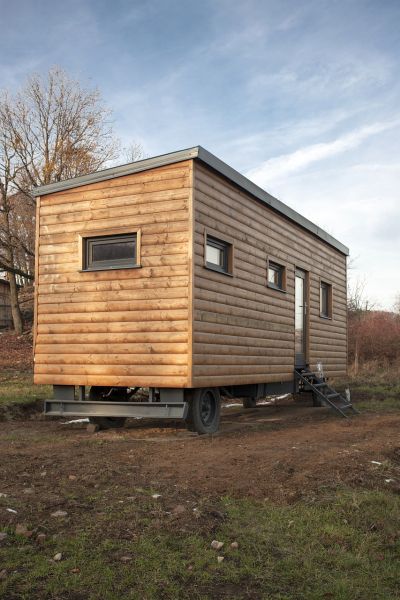
As a point of reference, the average U.S. home is around 2,600 square feet.
But whether your home is truly tiny or simply small, the tips and advice presented below should prove helpful.
10 Tips for Living in a Tiny House with Pets

Before moving into your mini home with your mutt, take these tiny house tips into consideration. This way, you can ensure that you and Spot are simpatico while sharing the same space.
1. Make Sure Fido Still Gets Plenty of Exercise
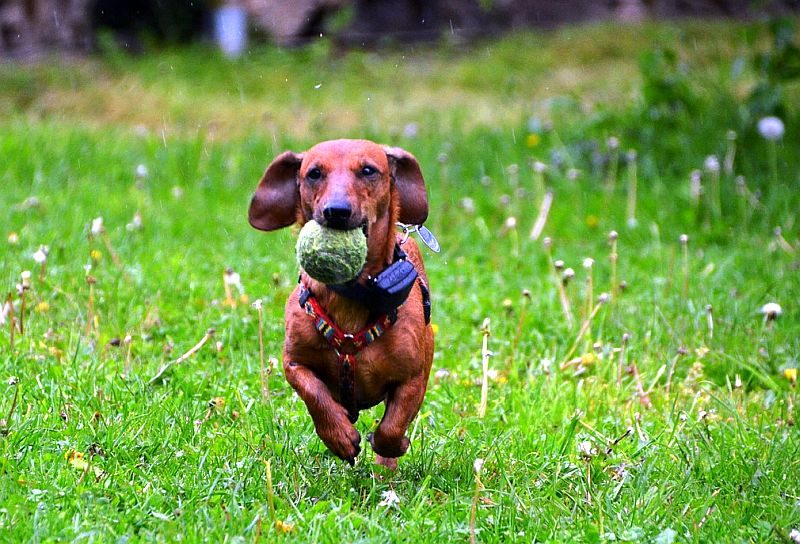
Most dogs are happy to relax practically anywhere — including a relatively small house — as long as they get in plenty of exercise. So, make sure your dog gets plenty of physical stimulation throughout the day so that he will spend lots of time conked out once back in your tiny house.
Obviously, long dog walks are the go-to exercise of choice for many owners, but there are tons of other options available. For example, you could:
- Make regular trips to the dog park so Spot can socialize.
- Enroll your woofer in puppy day care classes.
- Play fun games with your dog.
- Take your doggo for a dip at beach or a local lake.
Additionally, there are a number of types of canine exercise equipment you can use. These will obviously take up space, but some are small enough that they’d still be practical for owners living in tiny houses.
2. Be Strategic with Ramps and Stairs

Tiny homes can be sparse on space, so they often have staircases or ramps that provide access to out-of-the-way nooks and crannies. That’s great, but you have to make sure that your stairs are accessible and safe for your furry friend.
If your home doesn’t come with stairs or ramps, you can add some of your own. There are both commercial dog ramps and stairs available, but you can also make some DIY dog stairs if you’d prefer.
If your four-footer can’t (or won’t) use stairs for some reason, just make sure he has everything he needs on the ground level so he can access his essentials without assistance.
3. Make Sure Your Pooch Has Space to Be on His Own

Just like us, our pets need space to retreat to after a long day. You’ll want to make sure your dog has a cozy bed, crate, or resting space where he can fully stretch out and relax. Even if this hound haven needs to move to a different area from time to time, it’s key to give your pooch a designated space to unwind that he can call his own.
If your tiny house is on the large side, this may not be hard at all or require much in the way of special planning. However, if your tiny home is really small, you will need to get creative.
A lot of owners living in tiny houses have found that building in a little nook for their four-footer does the trick. This may be under a bed, in a small bit of overhead storage space (assuming you can provide access in a canine-safe way), or even under a staircase.
4. Make Good Use of the Available Outdoor Space

While you may be more limited indoors, you’ll probably have lots of elbow room outside your tiny house. So, be sure to use your outdoor living space in a Fido-friendly way. A few ways to do so include:
- Install dog-friendly fencing around your house (if you are allowed to do so).
- Set up a doggie door, so your pooch can come and go more easily.
- Hook your pooch up with an outdoor dog bed that’ll allow him to snooze in the sun.
- Mount a dog trolley outside your home to give your dog room to roam.
- If you’re feeling particularly ambitious, you can even construct an outdoor porch for your dog’s to enjoy.
Just make sure you’re up to date on the leash laws of your destination to ensure that you and your canine companion can safely enjoy the outdoors.
And, as always, make sure your pet has up-to-date ID tags — especially if you take your tiny house on the road. Even better, consider getting a GPS tracking collar for your pooch so you know you’ll always be able to find him if he wanders off.
5. Use Vertical Space As a Perch for Small Dogs

If you have a pint-sized pooch, you can use vertical space, such as window seats or repurposed shelves, to create another cozy space for your canine.
There aren’t a ton of commercial dog perches on the market, so you’ll likely find it necessary to build or improvise one of your own. But we’re betting that there’s plenty of overlap between the tiny house crowd and the DIY contingent. This stair-step window perch project from Ikea Hackers (pictured above) may work well, as it also provides more storage space.
Just make sure that the perch is safely accessible to your furry friend and that it has plenty of padding to keep your canine comfortable.
6. Prioritize Having Lots of Windows

Having plenty of light and windows can help your space seem bigger and brighter for you and your furry friend. Windows can also help your furry friend stay entertained throughout the day, by providing unobstructed access to neighborhood squirrel viewings.
For extra bonus points, set up “perches” by one or two of your windows, so that Spot has a comfy place to watch the world go by.
And while you’ll want to leave the windows uncovered for most of the time, you can still enjoy privacy when you want by adding some dog-proof window blinds or curtains. The best ones are very durable and will hold up to the occasional four-footed freak out, when a cat saunters into view.
7. Hard Floors Are a Good Idea
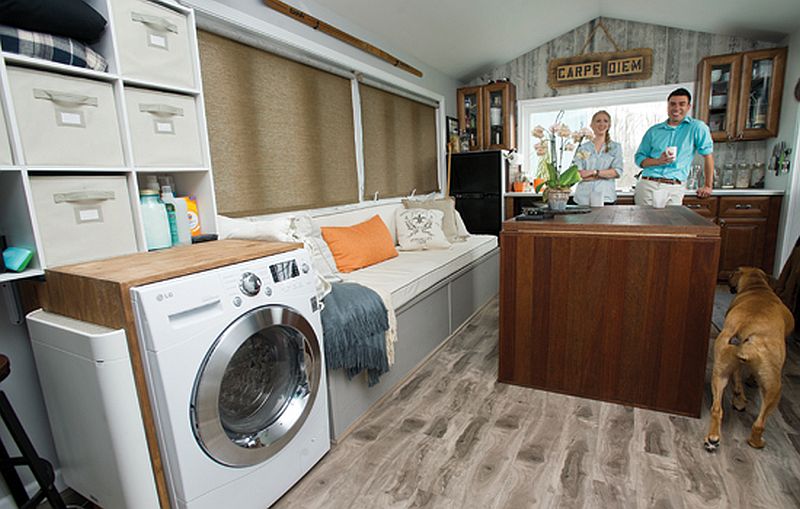
Flooring options are an important consideration for all owners, but dog-proof floors are especially important for those living in tiny houses.
For starters, it’s tricky to keep a tiny house tidy when you’re sharing it with four-footers. A little bit of shedding goes a long way in a tiny house, plus your pooch is bound to track some dirt into your dwelling at some point. But it’s also important to note that the small footprint of your floors means that they’ll suffer more damage than larger floors, thanks to the increased paw traffic they see.
Ultimately, this usually means you’ll want to opt for floors that are pretty hard and durable. Hardwoods, tile, or linoleum floors are durable and easy to clean, which makes them an especially good choice for cramped quarters.
Note that some doggos struggle, slip, and slide on slick floors, but this is easy to remedy with some dog booties to help your pet gain traction or low-pile rugs that are easy to vaccum.
8. Use Gates To Section Off Your Home When Needed

Corralling your canine in a tiny house can be a challenge, and you need to be able to cook dinner without having to dance around your doggo (who’s perpetually patrolling the floor for morsels that hit the ground).
Fortunately, there’s a time-tested and surprisingly simple solution: Make use of dog gates or play pens.
Most dog gates are very affordable, and they allow you to section off your space. This means you can clearly mark off-limit areas for your furry friend while you’re busy or away from the home. Best of all, gates and playpens almost always collapse into pretty small packages, which makes them easy to store too.
There’s one other cool thing about using gates: They may allow you to remove some of the doors in your tiny house. You don’t often think about it, but traditional doors take up some space, which you can free up by removing them.
9. Pick Up a Portable Bathing Station You Can Use Outside
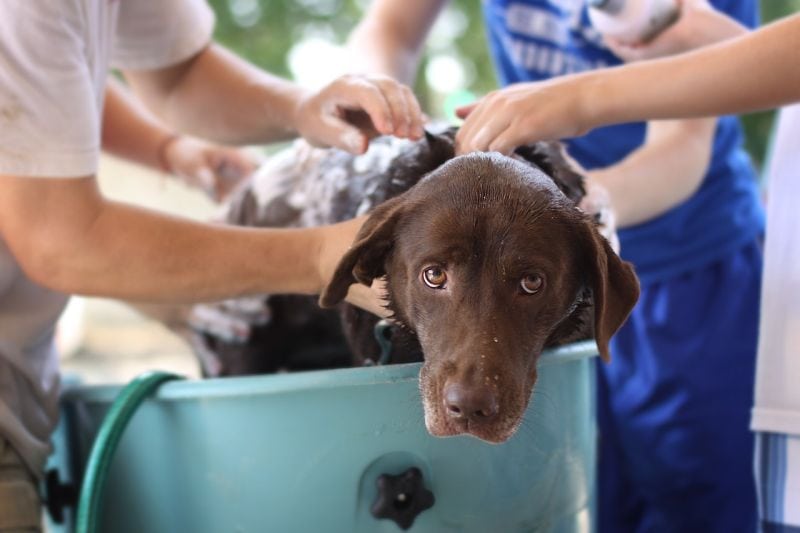
Keeping your canine clean is an important task for all owners, but it is especially important for those living in tiny houses. You’ll quickly notice if Fido stops smelling so fresh when living in close quarters.
But chances are, your tiny house isn’t going to have a full tub or a sink that’s large enough to support bathing your best buddy.
Don’t worry — just pick up some portable dog bathing tools that’ll let you keep your canine clean, despite your space limitations. There are tons of options available, from hose attachments that make it easy to spray down Spot to bathtubs that are easy to break down and store.
10. Consider Incorporating Storage For Spot Into the Design of the Home
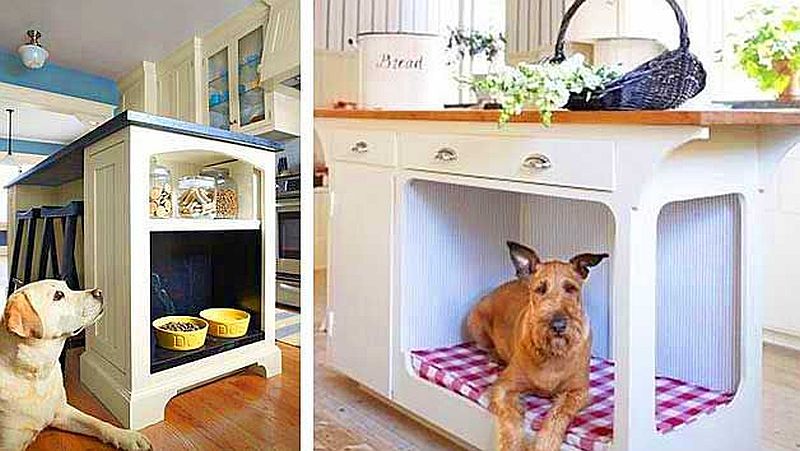
Finding space in a tiny home can be tricky, so it may be worth considering building Fido-friendly features into the home or furnishings.
This could include opting for a crate that doubles as an end table, building in recessed spots for food and water bowls, or finding another crafty way to store your dog’s essential items. You could also make a DIY dog bowl stand, complete with a storage compartment beneath. This will help you keep Spot’s stuff neat, tidy, and out of the way.
For that matter, don’t hesitate to use the outside of your tiny home for storage too. For example, you may make a simple rack for hanging up your dog’s leash, harness, and raincoat on an exterior wall. You could also use your dog’s portable bathtub to hold items when it’s not in use.
11. Use Collapsible Dog Crates
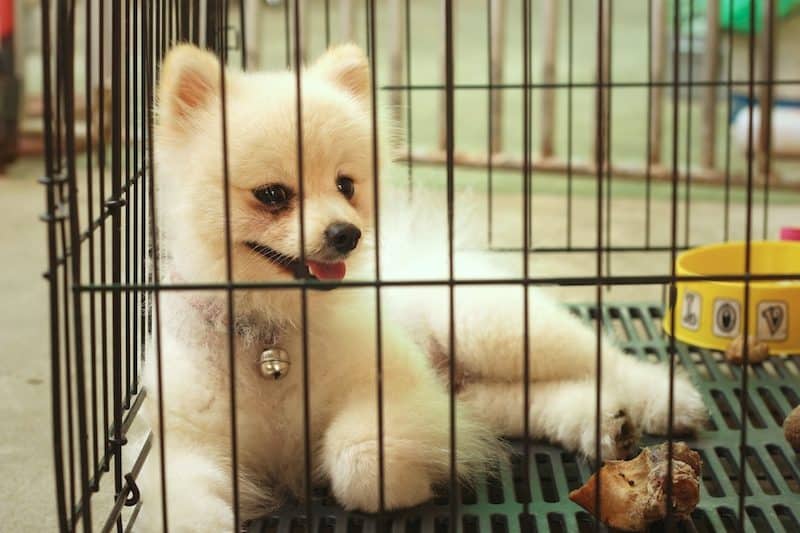
One of the interesting challenges of living with your doggo in a tiny home is that your space needs change over the course of the day.
For example, let’s say your doggo has a little bit of a destructive chewing problem and can’t be trusted to roam the house freely while you’re running errands. Crating him while you’re gone (for reasonable periods of time) is often a quick-and-easy solution for this issue.
But crates can take up quite a bit of real estate in your tiny house. That’s not a problem while you’re away, but you don’t want to be tripping over a bulky crate while making breakfast or brushing your teeth.
Fortunately, there’s an answer: Get a collapsible or soft-sided dog crate. This way, you can set it up for Spot when you’re leaving, and squish it back down and tuck it away somewhere when you return.
12. Think About Cat-and-Canine Issues
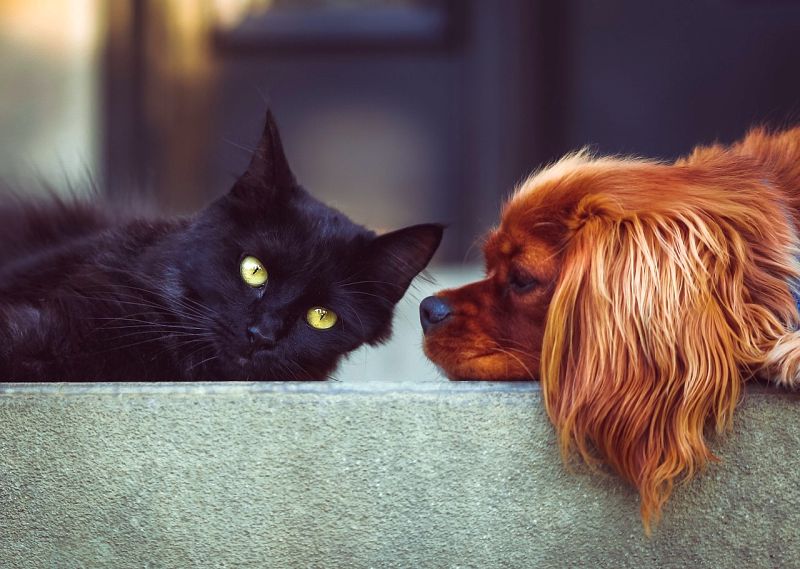
If Fido also shares space with a feline friend, you’ll want to make sure that everyone adapts well to a tiny-house lifestyle. The exact things you’ll need to do will vary based on the particulars of the interspecies relationship, but a few things to consider include:
- You’ll want to make sure to care for your cat’s mental and emotional well-being — especially if your doggo occasionally likes to harass your cat. One great way to do so is by providing your cat with an elevated “safe space,” which the dog can’t access.
- You’ll need to make sure the litter box is not a buffet for your pooch. Litterbox snacking is a disgusting but unfortunately common issue, so make sure you pick up a dog-proof litterbox to limit this kind of thing.
- You also need to make sure everyone is eating the proper food. There’s nothing dangerous about your dog sampling some cat food on occasion, but it isn’t a good idea over the long term. So, make sure you feed your cat in a place your dog can’t access or just feed the cat when you and your pooch go for your daily walk.
13. Be Mindful About Mealtime Mishaps in Multidog Families
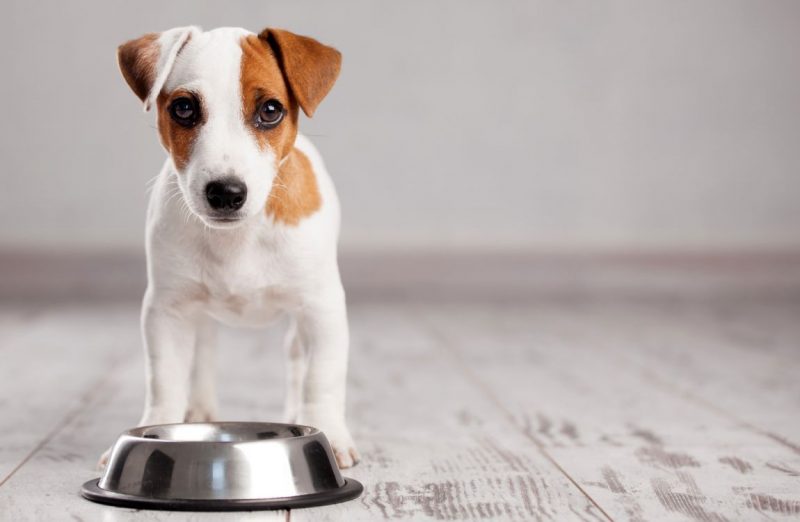
If you’re trying to cram a couple of canines in your tiny home, be sure that mealtimes will unfold smoothly and without conflict. Some dogs will gladly chow down beside each other, but others — particularly those who exhibit resource guarding issues — will need to eat in separate places or at separate times.
You’ll have to devise the best approach based on the specifics of your tiny house and dogs. But generally, you’ll want to start from the perspective of your more difficult doggo.
For example, if your 8-year-old beagle gets testy when others crowd him at meal times, maybe you could let him enjoy meals in the kitchen during quiet parts of the day. Meanwhile, you can take your cantankerous little corgi — who doesn’t have a care in the world — outside to eat his dinner.
If you have no other choice, you may want to consider crating one, while the other one eats. Then, give them a few minutes after dinner to settle down and digest before letting them romp around together again.
14. Provide Plenty of Mental Stimulation for Your Pet
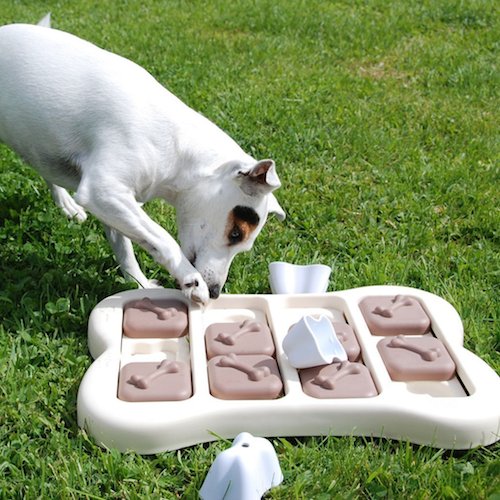
Even if you design your tiny dwelling to perfectly suit your pooch, the fact remains that he’s going to be trapped in a very small space for long periods of time.
That’s not necessarily a problem (particularly if you tucker him out regularly with plenty of exercise), but you don’t want him to get bored. Bored doggos are often destructive doggos, though some simply become depressed — neither possibility is desirable, though.
Fortunately, there are scads of ways to keep his mind occupied while you’re working or tending to other things. Interactive dog toys are the go-to option here, and they offer countless ways to keep your dog entertained.
Some are small, simple, and affordable (such as a good ‘ol stuffed KONG), while others are more elaborate and expensive (though likely entertaining). This includes things like automated treat dispensers and laser-pointing doodads.
Just consider the space you have and your dog’s specific personality when making your choice.
The Best Dog Breeds for Tiny Homes
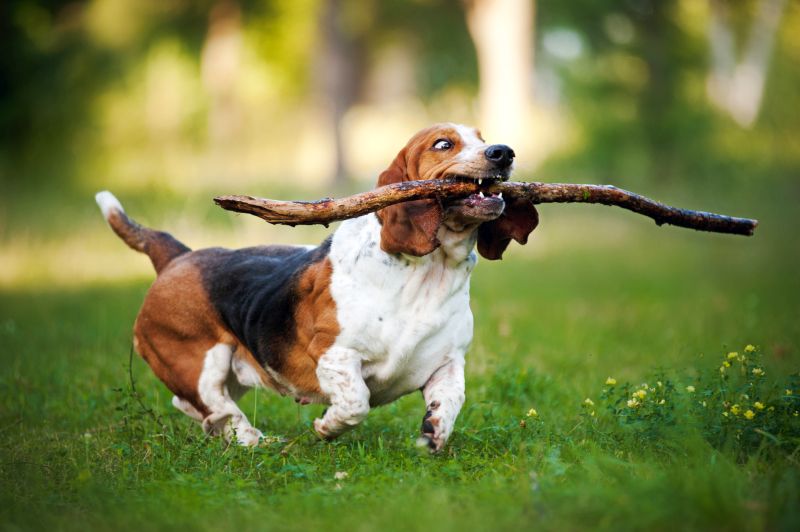
If you don’t have a canine companion just yet, it’s important to consider what types of dogs thrive in tiny homes.
Generally speaking, smaller dogs are ideal since they’ll be more comfortable within a confined space. But you’ll also want to consider finding a low-energy dog breed so that your canine companion can spend most of the day happily snoozing away.
With these factors in mind, here are few dog breed options that meet the criteria for perfect tiny house pets:
- Basset Hounds — Basset hounds are loveable loafs that adore relaxing with the ones they love. These canine couch companions are friendly, easygoing, and do well with other pets and children. Keep in mind that these sweethearts can be prone to drooling, so you may be in for some additional canine cleanup with this breed.
- Chihuahuas — These pint-sized pups are charming, loyal, and spunky little pets. They’ll do well in a tiny house environment due to their trademark small size and minimal exercise needs. Your tiny home will make a pooch palace for these small dogs.
- Chinese Crested Dogs — Chinese crested dogs are known for their exotic appearance and affectionate, lively personalities. These pups shed very little and are endlessly devoted to their humans making them amazing tiny house companions. You’ll find that these distinguished dogs are highly adaptable so long as they are given lots of love and regular playtime.
- Affenpinscher — These pups nicknamed “monkey terriers” are as unique as their appearance. Affenpinschers are tidy little dogs that carry themselves with plenty of confidence for their small size. These dogs do well with adults and are incredibly loyal to their humans. You’ll find that affenpinscher dogs are highly alert, and when they aren’t keeping watch out the window, they’re happy to cuddle up next to their peeps.
- French Bulldogs — Frenchies are adaptable little dogs that fit well with solo owners and families alike. These pups are known for being canine comedians and are sure to keep you entertained with their amusing, playful antics. When they’re not playing, these dogs are happy to relax with you on the couch.
- Shih Tzus — These loving “lion dogs” have lively, loving personalities that mesh well with families. Though these dogs love to play, they are happy to cuddle up next to you for a good portion of the day. Shih tzus have an outgoing yet gentle personality that is compatible with kids and other pets.
- Japanese Chins — Japanese chin dogs are noble canine companions that love spending time indoors with their humans. These lovable lap dogs are known for being quiet and fairly low-maintenance, making them excellent selections for smaller living arrangements.
- Maltese — These hardy watch dogs are happy to relax in your lap when they aren’t keeping an eye on the neighbors. The charming Maltese sheds very little and has a playful disposition that’s sure to win you over. Maltese dogs are very adaptable to small spaces, but they do enjoy engaged play sessions and leisurely walks.
- Brussels Griffons — The Brussels griffon is sometimes nicknamed a “Velcro” dog due to their tendency to always stick by their favorite humans. These playful, energetic pups are easy to train and are sure to make a life-long friend. You’ll find that these comedic canines are sure to provide plenty of laughs and cuddles.
- Cavalier King Charles Spaniel — These canine cuties are super affectionate and are sure to keep you smiling with their gentle, happy-go-lucky demeanor. You’ll find that cavalier King Charles spaniels are highly adaptable as long as they get to spend plenty of time with their family members. These sweethearts do best in homes where someone is usually around to keep them company.
- English Bulldogs — English bulldogs are known for being comical canines with hearts of gold. These friendly four-footers can be stubborn, but they make up for it with endless affection paired with their courageous yet calm demeanor.
- Italian Greyhounds — Italian greyhounds are playful, elegant little pups that make amazing low-maintenance companions. These sensitive sweethearts love spending time in your lap and appreciate playing with their family members throughout the day.
- Bonus: Mutts! — Mixed breed dogs can make excellent tiny house companions especially if they’re on the smaller side and have a laid-back demeanor. Consider adopting an adult dog as opposed to a puppy as they can often have a more relaxed personality that’s perfect for life in a smaller space.
***
Adjusting to tiny house life can be difficult for our furry friends. Hopefully, these strategies will make it easier for Spot to thrive in his charming new home.
Do you live with your pooch in a tiny home? What’s your favorite feature of your space? We’d love to hear all about it in the comments below!





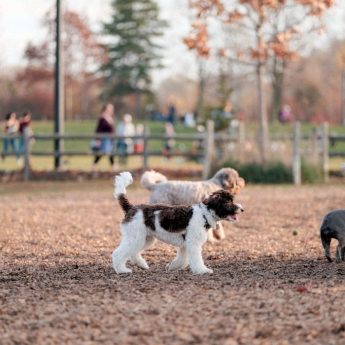

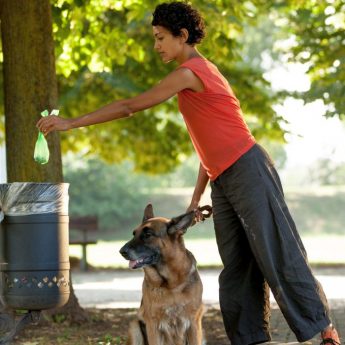
No Comments